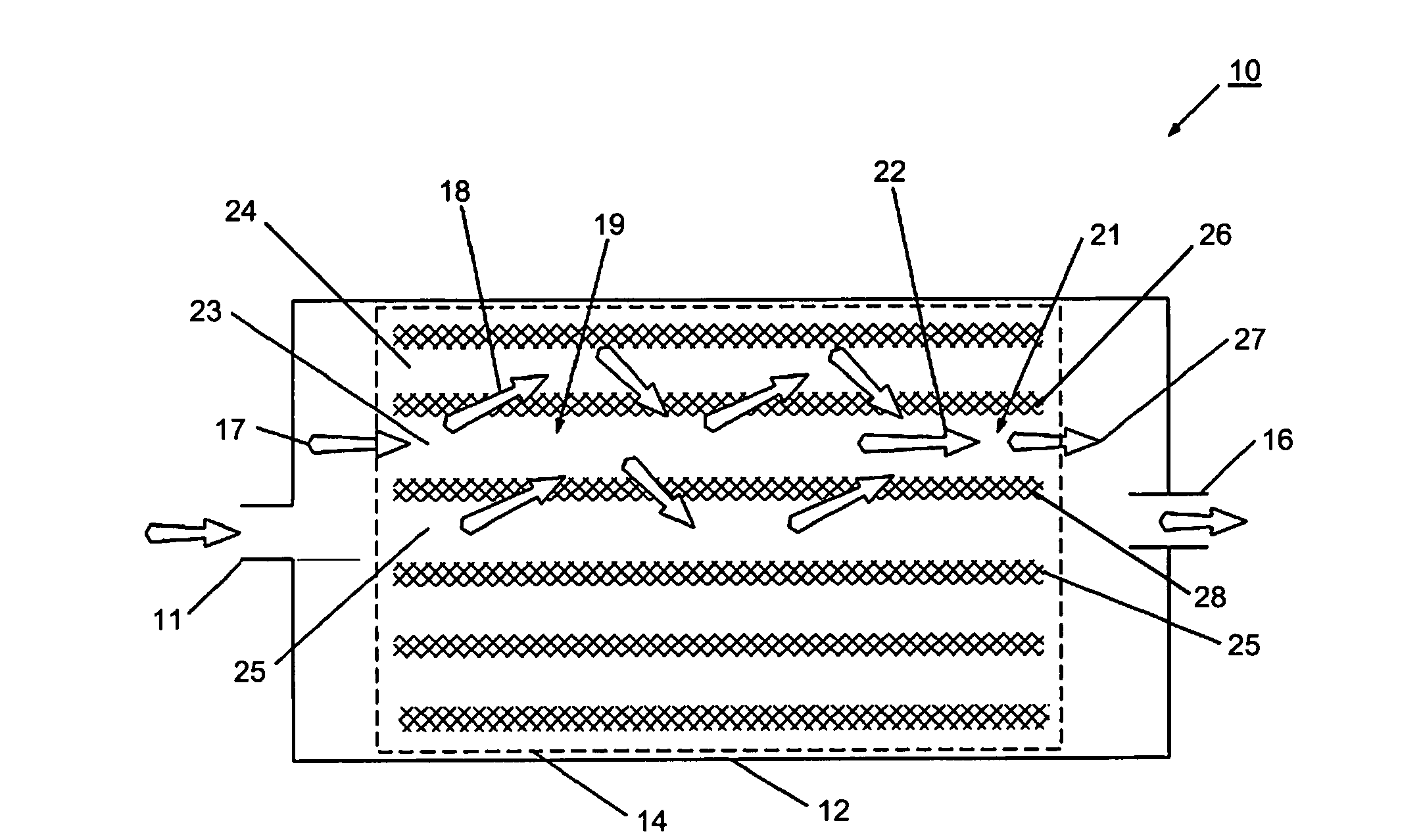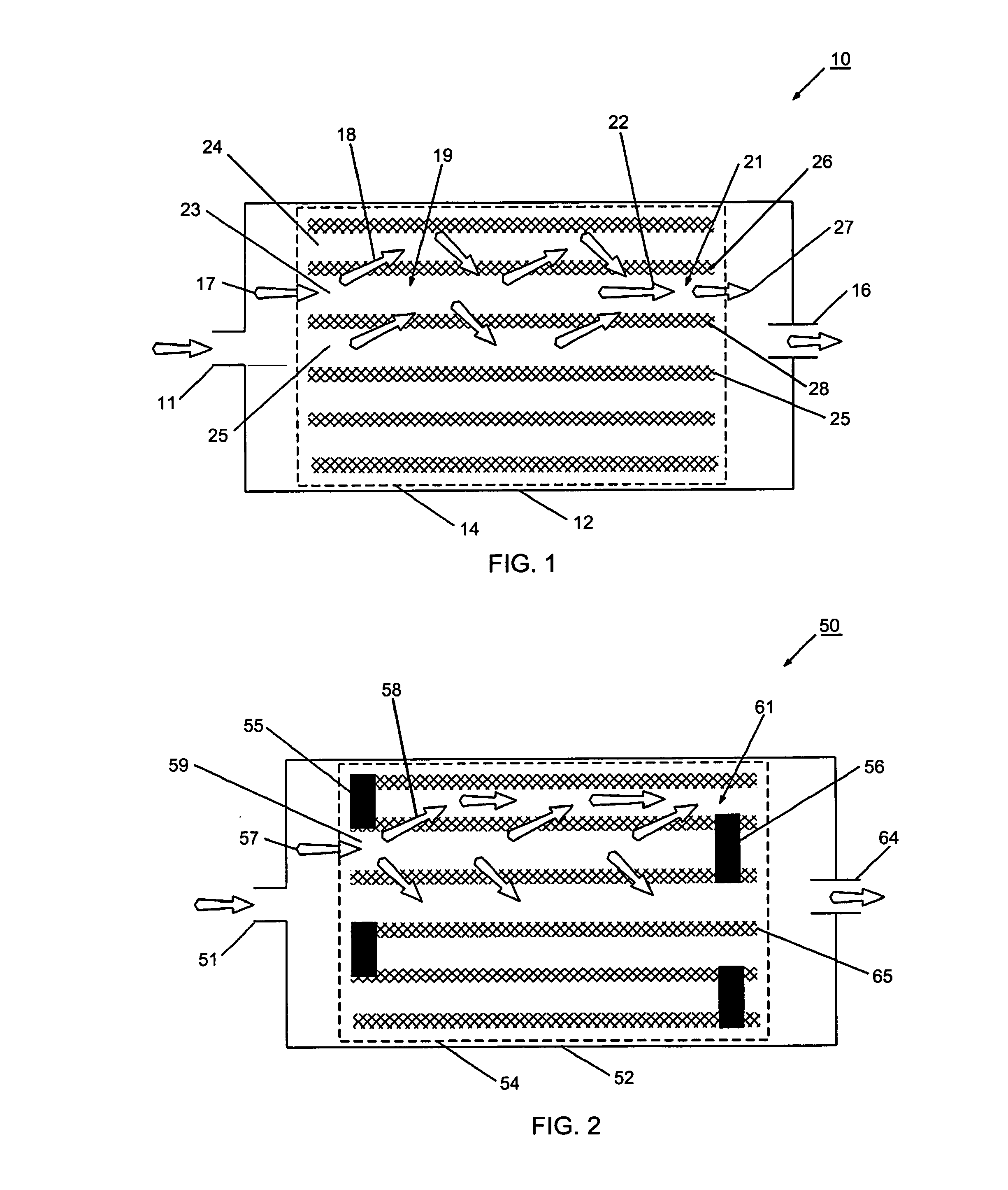Highly porous mullite particulate filter substrate
a technology of mullite and filter substrate, applied in the field of filters, can solve the problems of mechanical strength, undesirable effects of known filters, and contribute to (typically quick) a rise in backpressur
- Summary
- Abstract
- Description
- Claims
- Application Information
AI Technical Summary
Problems solved by technology
Method used
Image
Examples
Embodiment Construction
[0038]Detailed descriptions of examples of the invention are provided herein. It is to be understood, however, that the present invention may be exemplified in various forms. Therefore, the specific details disclosed herein are not to be interpreted as limiting, but rather as a representative basis for teaching one skilled in the art how to employ the present invention in virtually any detailed system, structure, or manner.
[0039]The drawing figures herein illustrate and refer to an exhaust system pathway that is, for the most part, specifically described as a component of an internal combustion engine exhaust system. However, it should be appreciated that the exhaust pathway may be used on other types of exhaust systems. For example, the exhaust system may be a fluidic flow system in the petrochemical, biomedical, chemical processing, painting shops, laundromat, industrial exhaust, power generation plant, water-filtration, oil-most removal, air-purification, deodorizer application, ...
PUM
| Property | Measurement | Unit |
|---|---|---|
| Temperature | aaaaa | aaaaa |
| Temperature | aaaaa | aaaaa |
| Thickness | aaaaa | aaaaa |
Abstract
Description
Claims
Application Information
 Login to View More
Login to View More - R&D
- Intellectual Property
- Life Sciences
- Materials
- Tech Scout
- Unparalleled Data Quality
- Higher Quality Content
- 60% Fewer Hallucinations
Browse by: Latest US Patents, China's latest patents, Technical Efficacy Thesaurus, Application Domain, Technology Topic, Popular Technical Reports.
© 2025 PatSnap. All rights reserved.Legal|Privacy policy|Modern Slavery Act Transparency Statement|Sitemap|About US| Contact US: help@patsnap.com



